"Leafy greens are not a niche segment anymore as retailers have been carrying more CEA-grown products in their stores," says Viraj Puri, CEO of Gotham Greens, a US greenhouse producer. That's mainly because of the consistency, quality, and year-round supply indoor farmers can provide to retail. "On top of that, we've seen a strong separation between operators that have stronger balance sheets and PNLs to be in it for the long term."
In an Indoor AgCon panel, "Charting the future landscape of CEA," moderated by Daniel Malech, Board Chair, SVP, CEA Alliance where they dived into what benefits indoor growers can offer to retail. Joining the panel are Jim DiMenna, President of Red Sea Farms, Viraj Puri, CEO of Gotham Greens and Matt Ryan, CEO of Soli Organic.
How to market a CEA product
When it comes to marketing an indoor-grown product in retail, many agreed upon the fact that it all comes down to quality, as most consumers don't care for the sustainability aspect of it. "It's about producing quality at the right price point, effectively," Matt Ryan, CEO of Soli Organic, a US vertical farming company, points out.
"Stay focused on cost and quality, because it's not like any business in that aspect. Retail is looking at it as, is it better or worse than outdoor grown. If it's not, then they don't want it. That's why we have to, and we can deliver consistent quality." Currently, snacking tomatoes is the fastest-growing category across indoor-grown products in retail.
Viraj adds that for CEA, "It's a paramedic that we deliver a good quality product because otherwise, we can break down the entire industry, living up to that promise."
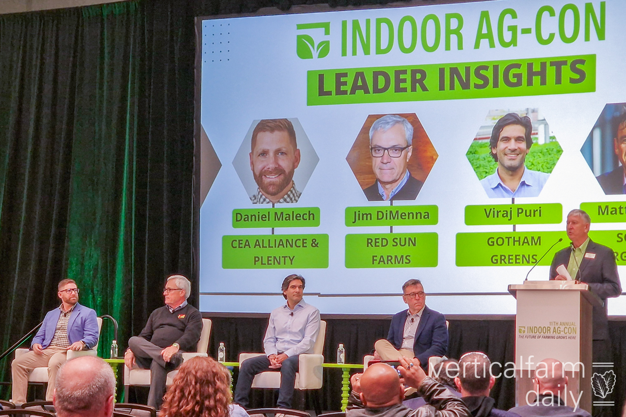
How to get pricing right
According to Viraj, indoor producers have to win over the retailer and customer with a value proposition that's compelling across the board and not at a mid-premium to be expensive. Yet, when selling it below commodity prices would do a bit of a disservice. Warning the industry, Viraj goes, "Let's not trade the retailers down by giving the product away by being subsidized by our profit margins. We're in an inflationary time and are cutting a lot of fat, but now you're cutting bone…"
It comes down to the price of the profit and how much m2 you need to supply it. However, when it comes to branding, the core message, according to Jim Dimenna, President of Red Sun Farms, that needs to be communicated by indoor growers is "Our product will be there every day, protected indoors, and it's growing constantly. We have much better characteristics, so you can set a fixed price. What is the profit price, and how many m2 do you need to supply it? We control the retailers as they don't want to deal with these gaps. We have a lot of good things to sell."
Red Sun Farms has been delivering the message that their products are greenhouse-grown, yet a large part of consumers don't know where the lettuce comes from. However, with the current technology, there's much to be gained from that compared to ten years ago. Asking for a view on the future of the industry, Jim comments that we're on the right side of growth. "We have to feed an entire spectrum from downtown Manhattan to other parts where there's less prosperity, which is a big responsibility for all of us."
Vijay mentioned that 'locally grown' is a powerful asset, especially in places like New York, as there is a freshness benefit to the product and its shelf life. "It evokes the emotions of supporting local, less transport, and more, which is a powerful marketing tool if that is the business model of an operator."
How are we foreseeing the future?
The question we've all been waiting for, "How do you see the coming years for CEA?" was optimistically but critically answered by Viraj as he said that obtaining capital is going to be much more of a hustle.
"It's going to come down to lower cost financing structures like debt financing. We will be seeing new ventures coming in, and I think that window of time for certain people to go out in vertical farming and raise a ton of capital is going to be more difficult. We now have an opportunity to focus on operations and financially stable generations to come. Potentially, we'll see some consolidation in the industry, but there's a lot of fragmentation. We want to see some transformational mergers happening and a growth in leafy green contribution by a couple of percent."
"In our industry, I believe we will continue to grow because of the acceptance of the customer. Newcomers are coming in and struggling with scale as they all want to be relevant, but it's not easy and very expensive. If you want to be relevant and have a hiccup, that's a serious problem. Start slow, and you'll be relevant in time as you go. You'll get to scale when you're successful, but when you fail, you're out of the game," Jim adds.
In the meantime, enjoy some sneak peeks from the show.
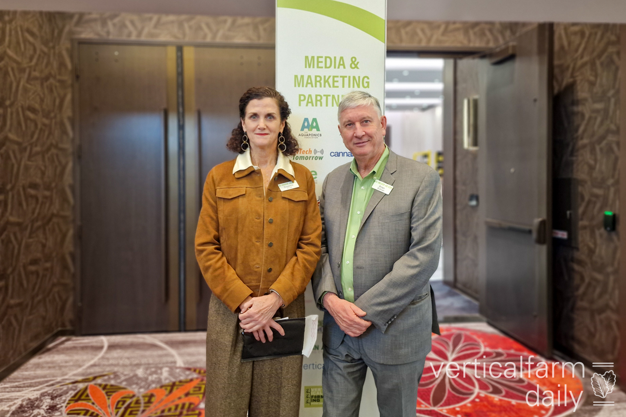
The stars of the show! Suzanne Pruitt and Brian Sullivan with Indoor AgCon. Save the date for next year's edition on the 11 and 12 March 2025 at the Westgate Hotel in Las Vegas.
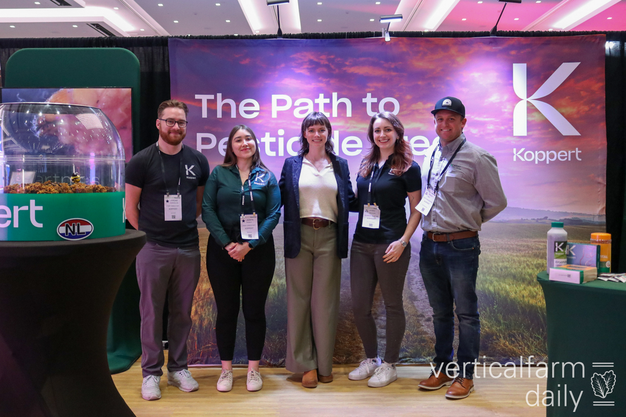
The Koppert team was all smiles and brought something special this year: living bumblebees!
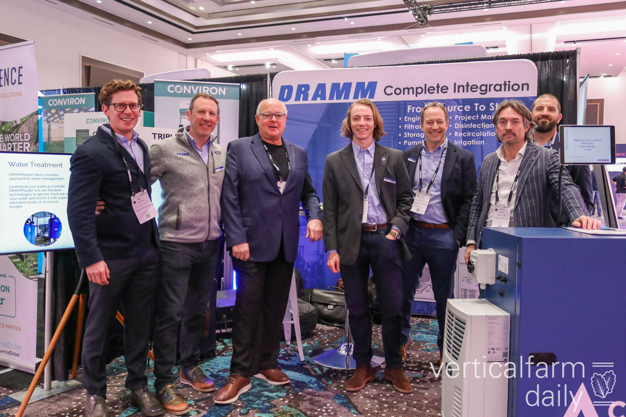
The Dramm booth looked fresh! Glad to see that the backdrop came in on time...
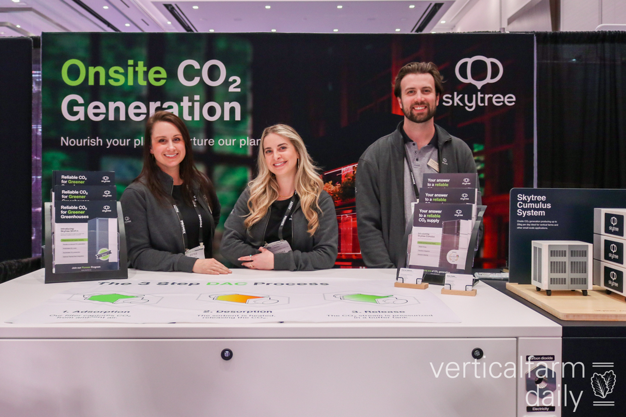
Estee Chaikin, Camille Hanna, and John Quinn with Skytree were very glad to showcase their Cumulus product.
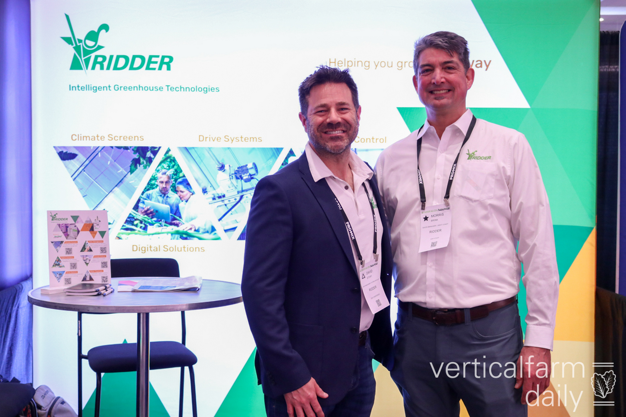 David Story and Morris Brink with Ridder.
David Story and Morris Brink with Ridder.
Keep an eye out for the official photo report on Thursday. In the meantime, if we were not able to catch your picture, please send your photo to info@verticalfarmdaily.com so we can include it in the report.
 For more information:
For more information:
Red Sun Farms
Jim Dimenna, President
Tel.: +1 (519) 712-8493
lneill@redsunfarms.com
www.redsunfarms.com
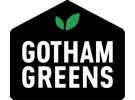 Gotham Greens
Gotham Greens
Viraj Puri, CEO
info@gothamgreens.com
www.gothamgreens.com

Soli Organic
Matt Ryan, CEO
info@soliorganic.com
www.soliorganic.com
